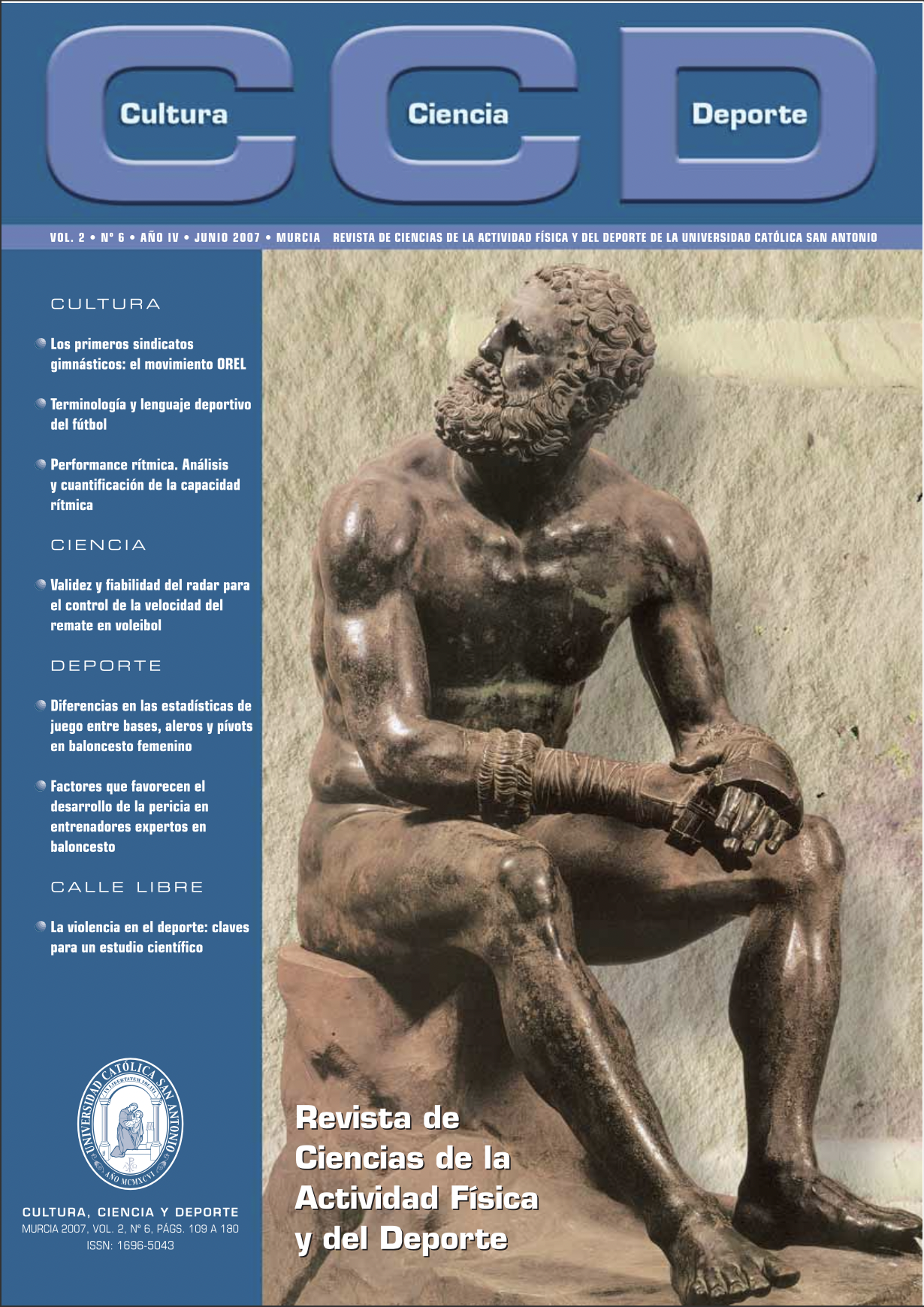Performance rítmica. Análisis y cuantificación de la capacidad rítmica. (Rhythmic performance. Analysis and quantification of the rhythm capacity).
DOI:
https://doi.org/10.12800/ccd.v2i6.180Abstract
Este artículo pretende mostrar que el ritmo forma parte de un lenguaje científico objeto de estudio de la Motricidad Humana. La búsqueda de esa posición exigió que fueran desarrolladas diversas cuestiones de estudio, como ritmo, estructura rítmica, factores rítmicos y capacidad rítmica. El comportamiento rítmico en la motricidad tiene tanta importancia que entendemos que debe ser integrado por los profesores como uno de los paradigmas esenciales en el proceso de aprendizaje del movimiento. Entendemos el comportamiento rítmico como el punto interesante de la calidad técnica y la calidad expresiva. El ritmo no es solamente una de las constituyentes operacionales del movimiento sino también un elemento de soporte para la detección de la calidad motora y estética y un elemento estructurador de la tarea motora. Pretendemos también en este artículo seleccionar las variables rítmicas implicadas en el proyecto motriz, principalmente los factores rítmicos –Trascripción, Sincronización y Reproducción (TSR)– y las estructuras rítmicas jerarquizadas por grados de complejidad, con el objetivo de demostrar la posibilidad de cuantificar la Capacidad Rítmica Motora General (CRMG). Esta estrategia aplicada a los factores TSR posibilitó evaluar analíticamente los factores rítmicos, estableciendo entre ellos relaciones que traducen comportamientos individuales potenciando de una forma integrada una nueva dimensión de RITMO-TIPO.
Palabras clave: estructura rítmica, ritmo, factores rítmicos, capacidad rítmica.
===
Abstract
This manuscript aims to show that rhythm belongs to a scientific language witch is the object of Human Movement studies. The important of this position demented the development of different approaches on this specific theme. They go from the concept of rhythm to that of rhythmic structure, rhythmic factors and, rhythmic ability. Rhythmic behaviour in movement is so important that we believe it should be integrated by teachers as one of the essential paradigms in the movement learning process. We understand rhythmic behaviour as a fulcra point of technical and expressive qualities. Rhythm is not only one of the operational units of movement, but also as support element for the detection of motor and aesthetic quality. It is also aim to select the rhythmic units implied in the motor project, namely the rhythmical factors - Transcription, Synchronization and Reproduction (TSR) and rhythmical structures in hierarquy according to the complexity degree. This has the aim of showing the possibility of quantifying general rhythmic motor ability (CRMG). This strategy applied to TSR factors allowed to analytically evaluate the rhythmical factors, establishing relations that translate individual behaviours, actualizing a new dimension of Rhythm- type in an integrated way.
Key words: rhythm, rhythmic structure, rhythmic factors, rhythm capacity.
Downloads
How to Cite
Issue
Section
License
The authors who publish in this journal agree with the following terms:
- The authors retain the copyright and guarantee the journal the right to be the first publication of the work as well as licensed under a Creative Commons Attribution License that allows others to share the work with recognition of the authorship of the work and the initial publication in this journal.













